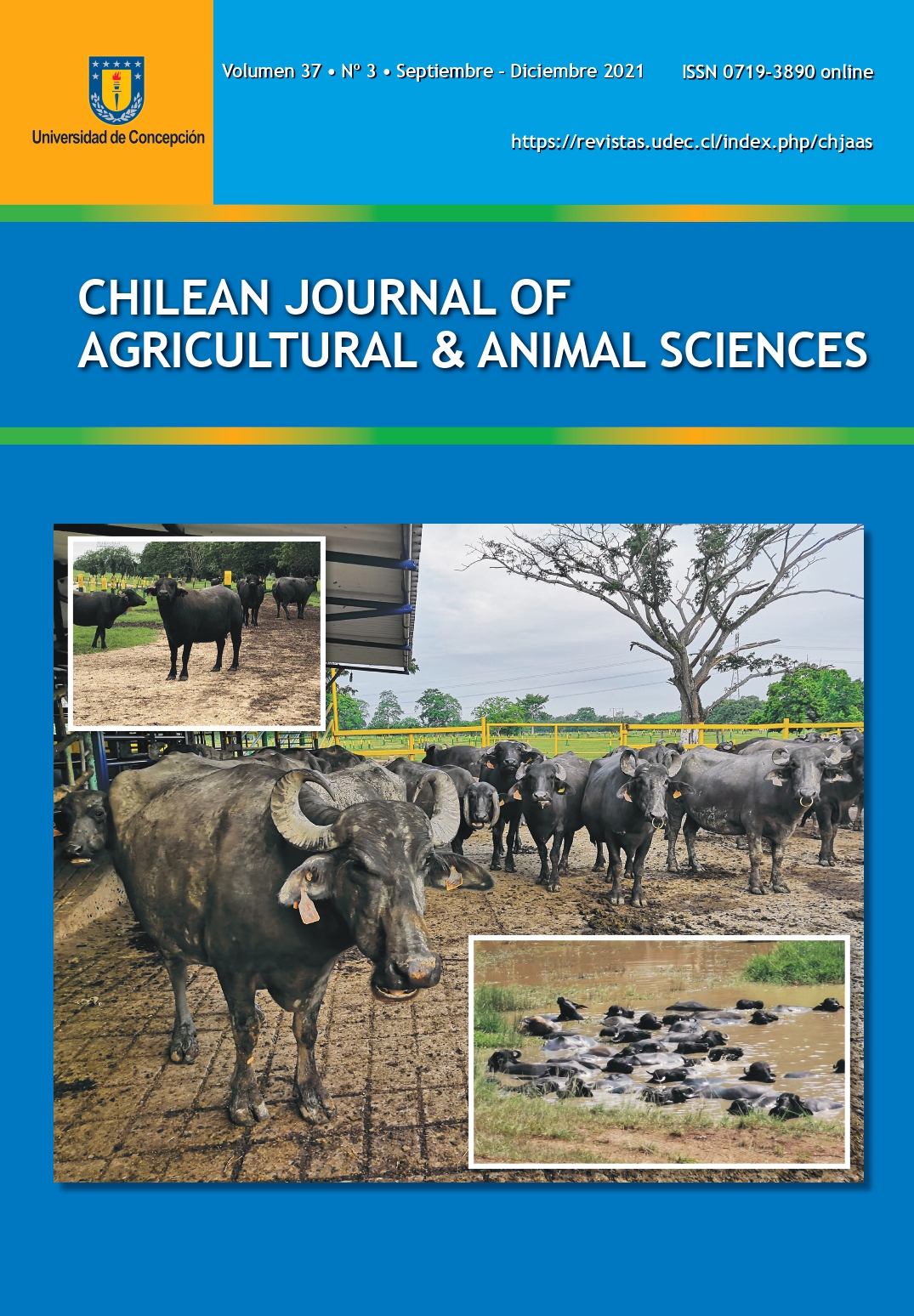CHANGES IN MACRONUTRIENTS AND PHYSICAL PROPERTIES DURING THE GROWTH OF Lentinula edodes AND Pleurotus ostreatus IN A COMPOST BASED ON SUGARCANE BAGASSE AGRICULTURAL WASTE
DOI:
https://doi.org/10.29393/CHJAAS37-31CMLO40031Palabras clave:
Biofertilizer, nitrogen, biomass, spent mushroom substrate.Resumen
Spent mushroom substrate of different edible mushrooms is a nutrient-rich biomass associated with mycelial metabolic activity in the growth substrate. The objective of this study was to evaluate the changes in the nutritional content and physical properties of a sugarcane bagasse substrate after the cultivation of the edible mushrooms Pleurotus ostreatus and Lentinula edodes. Strains of both species were first propagated in potato dextrose agar culture medium, then in wheat grains, and finally inoculated in sterile sugarcane bagasse. Determinations of macronutrients, pH and C:N ratio were carried out at 0, 30 and 60 days after mushroom mycelium growth in the bagasse-based substrate. After 30 and 60 days of inoculation, nitrogen (N), phosphorous (P) and potassium (K) recorded increases of 0.26%, 0.06% and 0.14 with Pleurotus ostreatus, and increases of 0.33%, 0.05%, and 0.11% with Lentinula edodes, respectively. Regarding micronutrients, there was an increase in Calcium (Ca) and Sulphur (S) in both substrates, but amounts varied during the time evaluated. Additionally, an important increase in hydrogen ion concentration was observed when both species were inoculated, with final values of 4.26 and 3.9 for Pleurotus ostreatus and Lentinula edodes species, respectively. In conclusion, this biomass presents a high percentage of the essential micro and macro elements required in a fertilizer.
Descargas
Publicado
Cómo citar
Número
Sección
Derechos de autor 2021 Universidad de Concepción

Esta obra está bajo una licencia internacional Creative Commons Atribución 4.0.







